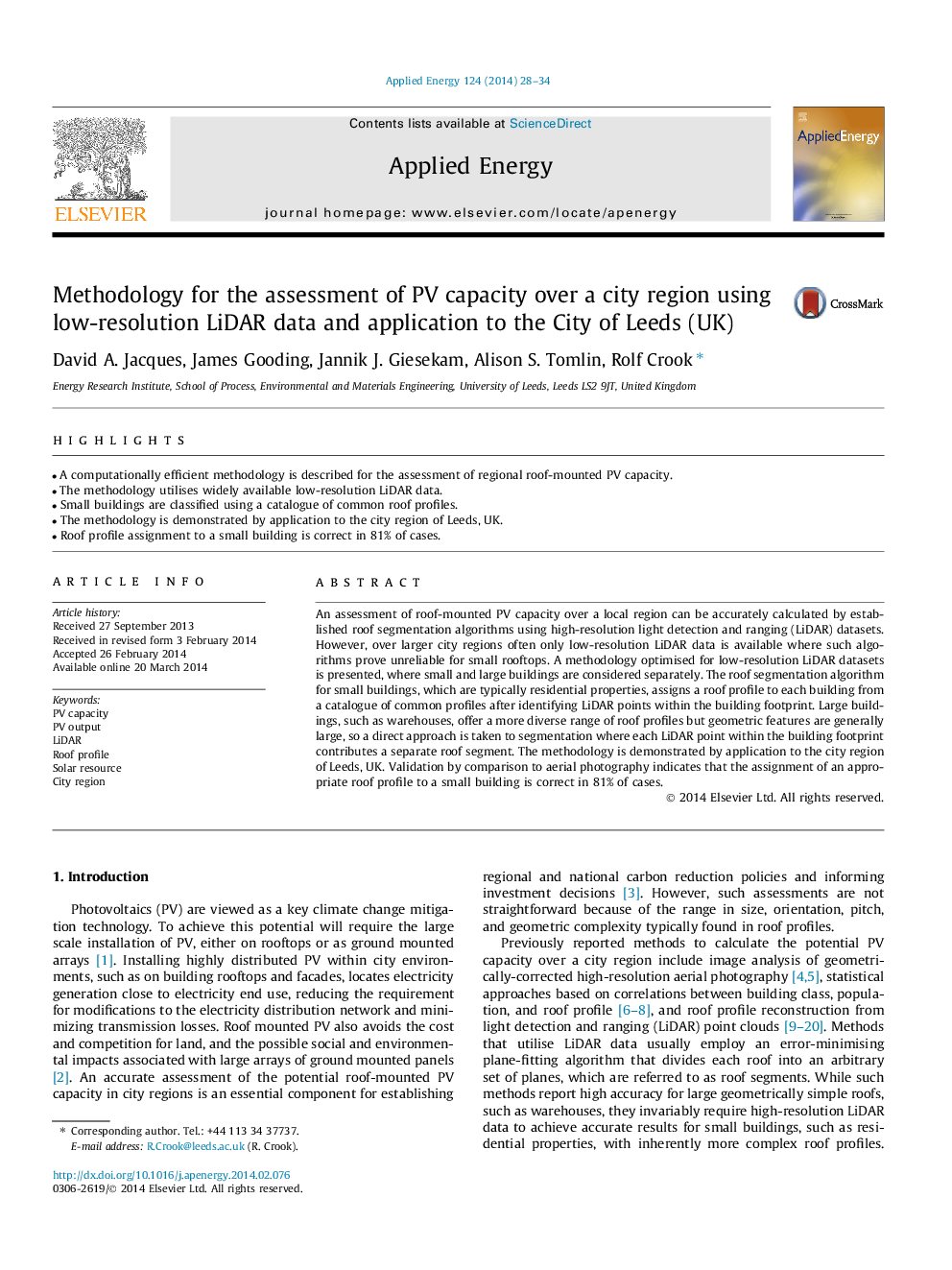| Article ID | Journal | Published Year | Pages | File Type |
|---|---|---|---|---|
| 242811 | Applied Energy | 2014 | 7 Pages |
•A computationally efficient methodology is described for the assessment of regional roof-mounted PV capacity.•The methodology utilises widely available low-resolution LiDAR data.•Small buildings are classified using a catalogue of common roof profiles.•The methodology is demonstrated by application to the city region of Leeds, UK.•Roof profile assignment to a small building is correct in 81% of cases.
An assessment of roof-mounted PV capacity over a local region can be accurately calculated by established roof segmentation algorithms using high-resolution light detection and ranging (LiDAR) datasets. However, over larger city regions often only low-resolution LiDAR data is available where such algorithms prove unreliable for small rooftops. A methodology optimised for low-resolution LiDAR datasets is presented, where small and large buildings are considered separately. The roof segmentation algorithm for small buildings, which are typically residential properties, assigns a roof profile to each building from a catalogue of common profiles after identifying LiDAR points within the building footprint. Large buildings, such as warehouses, offer a more diverse range of roof profiles but geometric features are generally large, so a direct approach is taken to segmentation where each LiDAR point within the building footprint contributes a separate roof segment. The methodology is demonstrated by application to the city region of Leeds, UK. Validation by comparison to aerial photography indicates that the assignment of an appropriate roof profile to a small building is correct in 81% of cases.
